Dental implantology has seen remarkable advancements over the years, with the development of innovative components that enhance the functionality and aesthetic appeal of implants. One such component is the straight multi unit abutment. This article delves into the features, benefits, and applications of straight multi-unit abutments in dental implant procedures.
What is a Straight Multi Unit Abutment?
A straight multi unit abutment is a connector placed on top of a dental implant to facilitate the attachment of prosthetics. Unlike single-unit abutments, which connect one prosthetic tooth to one implant, multi-unit abutments allow multiple prosthetic teeth to be attached to a series of implants. This setup is particularly useful for full-arch restorations, such as those used in the All-on-4 technique.
Features of Straight Multi Unit Abutment
Alignment
As the name suggests, straight multi unit abutment are designed to be aligned straight with the implant. This alignment is crucial for certain implant configurations and ensures that the prosthetics fit correctly.
Versatility
These abutments are available in various heights and widths, making them adaptable to different clinical situations and patient needs.
Ease of Use
They are designed for easy handling and placement, reducing the complexity and time required for dental procedures.
Compatibility
Straight multi unit abutments are compatible with a wide range of implant systems, enhancing their utility in diverse clinical settings.
Benefits of Using Straight Multi Unit Abutment
- Improved Stability and Support: Straight multi-unit abutments provide robust support for prosthetic teeth, ensuring stability and durability. This is especially important in full-arch restorations where multiple teeth are supported by a few implants.
- Enhanced Aesthetics: By enabling precise alignment and fitting of prosthetics, these abutments help achieve a natural and aesthetically pleasing result. The straight alignment ensures that the prosthetics look uniform and harmonious.
- Simplified Maintenance: Multi-unit abutments are designed to facilitate easy cleaning and maintenance of the prosthetics. This helps in maintaining oral hygiene and prolonging the lifespan of dental restoration.
- Flexibility in Prosthetic Design: The use of straight multi-unit abutments allows for a variety of prosthetic designs, including fixed bridges and removable overdentures. This flexibility ensures that the dental solution can be tailored to the specific needs of the patient.
Applications of Straight Multi-Unit Abutments
Full-Arch Restorations: In procedures like the All-on-4 technique, straight multi-unit abutments are essential for attaching a full set of prosthetic teeth to just four implants. This approach provides a cost-effective and efficient solution for patients with complete tooth loss.
Complex Cases: In cases where patients have varying bone densities and implant positions, straight multi-unit abutments can help achieve optimal alignment and stability of the prosthetics.
Temporary Restorations: These abutments can also be used in temporary restorations, providing patients with functional and aesthetic teeth while the final prosthetics are being fabricated.
Straight multi unit abutment plays a crucial role in modern dental implantology, offering a reliable and versatile solution for various restorative needs. Their ability to provide stable, aesthetically pleasing, and easily maintainable support for prosthetic teeth makes them an invaluable component in both simple and complex dental restorations.
By understanding the features and benefits of straight multi-unit abutments, dental professionals can make informed decisions about their use in different clinical scenarios. This, in turn, ensures that patients receive the best possible care and outcomes from their dental implant procedures.
For patients considering dental implants, consulting with a knowledgeable and experienced dental professional is essential. This ensures that the most appropriate components and techniques are used, leading to successful and satisfying dental restorations.
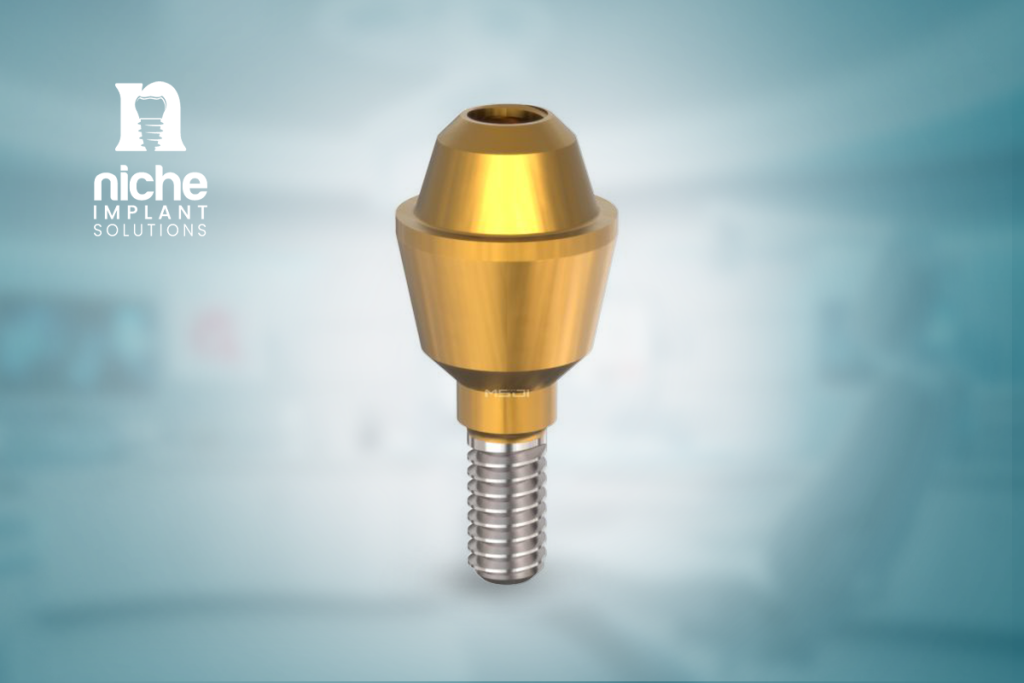
Straight Multi Unit Abutment or Angled Multi Unit Abutment: Which Option Is Right for Your Dental Implant Needs?
Dental implantology offers various solutions tailored to meet the diverse needs of patients. Among the essential components of dental implants are straight multi unit abutment, which come in two primary types: straight and angled. Understanding the differences in design, application, and the clinical scenarios favoring each type can help dental professionals make informed decisions for optimal patient outcomes.
Differences in Design and Application
Straight Multi Unit Abutment:
- Design: These abutments are aligned perpendicularly to the implant fixture, providing a straight path for attaching prosthetics. They are typically used when implants are placed parallel to each other and the jawbone.
- Application: Ideal for cases where the implants are correctly aligned without the need for angulation. They are often used in straightforward, uncomplicated implant placements where the bone structure supports a direct approach.
Angled Multi-Unit Abutments:
- Design: These abutments have an angulated top that allows the prosthetic to be attached at an angle, typically 17 or 30 degrees. This design compensates for implants that are placed at an angle due to anatomical or surgical considerations.
- Application: Useful in cases where implants cannot be placed parallel, such as in areas with limited bone density or where anatomical structures like the sinus cavity or nerves must be avoided. They provide flexibility in creating a proper occlusal plane and achieving aesthetic results.
Clinical Scenarios Favoring Straight or Angled Abutments
Straight Multi Unit Abutment:
- Scenario 1: Full-arch restorations using techniques like All-on-4, where implants can be placed in a straight, parallel configuration.
- Scenario 2: Cases with sufficient jawbone density and volume, allowing for straightforward implant placement without the need for angulation.
- Scenario 3: Patients requiring minimal prosthetic adjustment and a simpler, more direct restoration approach.
Angled Multi-Unit Abutments:
- Scenario 1: Situations where implants must be placed at an angle to avoid anatomical structures, such as the mandibular nerve or maxillary sinus.
- Scenario 2: Cases with uneven bone density or volume, necessitating angled placement to achieve stability and support.
- Scenario 3: Patients with aesthetic concerns, where angling the abutments can help achieve a more natural-looking gumline and prosthetic alignment.
Pros and Cons of Each Type
Straight Multi Unit Abutment:
- Pros:
- Simpler surgical procedure with fewer complications.
- Easier prosthetic fabrication and attachment.
- Typically more cost-effective due to the straightforward design.
- Cons:
- Limited flexibility in cases with anatomical challenges.
- May not be suitable for all patients, particularly those with significant bone loss or anatomical variations.
Angled Multi-Unit Abutments:
- Pros:
- Greater flexibility in addressing complex anatomical scenarios.
- Improved aesthetic outcomes by compensating for implant angulation.
- Better utilization of available bone, potentially reducing the need for grafting.
- Cons:
- More complex surgical procedure and prosthetic fabrication.
- Potentially higher costs due to the specialized design and techniques required.
- Requires a higher level of skill and experience from the dental professional.
Both straight and angled multi-unit abutments play crucial roles in modern dental implantology. The choice between them depends on the specific clinical scenario, anatomical considerations, and desired outcomes. By understanding the differences in design, application, and the pros and cons of each type, dental professionals can tailor their approach to meet the unique needs of each patient, ensuring successful and satisfactory implant restorations.
What Are the Future Trends Shaping Straight Multi Unit Abutment Technology in Dental Implantology?
As dental implantology continues to evolve, multi-unit abutments play a pivotal role in shaping the future of dental restorations. Emerging technologies and materials are set to transform how these components are designed, manufactured, and utilized. This article explores the latest trends and predictions for the future of multi-unit abutment technology and its potential impact on clinical practice and patient care.
Emerging Technologies and Materials
3D Printing and Additive Manufacturing:
- Description: The use of 3D printing technology in creating custom multi-unit abutments is on the rise. This process allows for precise, patient-specific designs that enhance fit and functionality.
- Impact: Reduced manufacturing time and cost, as well as improved accuracy in prosthetic solutions.
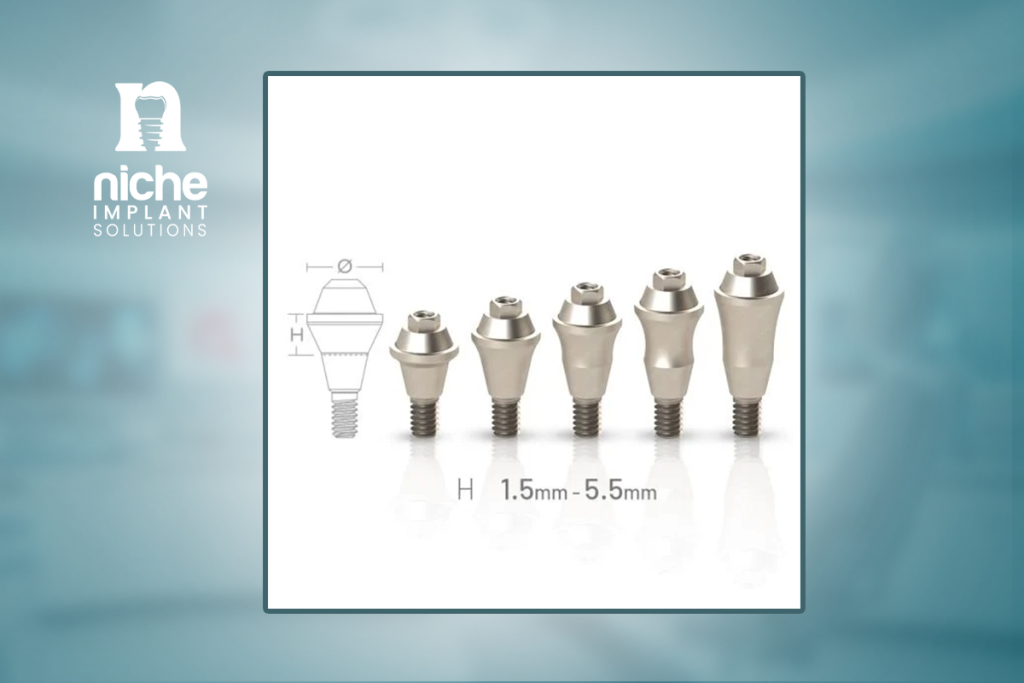
Advanced Materials:
- Description: New biocompatible materials, such as zirconia and advanced titanium alloys, are being developed to enhance strength, aesthetics, and integration with natural bone.
- Impact: Enhanced durability and reduced risk of implant failure, leading to better long-term outcomes.
Digital Dentistry Integration:
- Description: The incorporation of CAD/CAM technology in designing and fabricating multi-unit abutments allows for streamlined workflows and improved precision.
- Impact: Faster turnaround times for restorations and greater consistency in the final product.
You can also read: What Makes the Straumann Scan Body a Game-Changer in Dental Implant Precision?
Smart Technology and IoT:
- Description: The potential for incorporating sensors into dental implants and abutments to monitor health indicators (like stress and load) in real time.
- Impact: Enhanced patient monitoring and early detection of complications, leading to proactive interventions.
Predictions for the Future of Dental Implantology
- Personalized Dentistry:
- The trend toward personalized treatment plans will continue, with multi-unit abutments increasingly tailored to individual patient anatomy and needs.
- Minimally Invasive Techniques:
- Future advancements will likely emphasize less invasive procedures, with multi-unit abutments designed to facilitate easier placement and less discomfort for patients.
- Sustainability:
- A growing focus on environmentally friendly materials and manufacturing processes will shape the future of dental implant components, including multi-unit abutments.
- Enhanced Collaboration:
- Increased collaboration among dental professionals, engineers, and technology developers will lead to innovative solutions that improve patient outcomes and clinical efficiency.
Potential Impact on Clinical Practice and Patient Care
- Improved Treatment Outcomes:
- The advancements in straight multi unit abutment technology will likely result in higher success rates for implant procedures, leading to increased patient satisfaction and trust in dental care.
- Increased Efficiency:
- Streamlined processes through digital workflows and 3D printing will reduce the time required for surgeries and restorations, allowing dental practices to serve more patients effectively.
- Cost-Effectiveness:
- With advancements in manufacturing techniques and materials, the costs associated with multi-unit abutments may decrease, making dental implant treatments more accessible to a broader patient base.
- Enhanced Patient Experience:
- As technologies evolve, patients can expect a more comfortable and efficient experience, from initial consultations through the entire treatment process, leading to better overall satisfaction.
The future of straight multi unit abutment technology is bright, driven by emerging technologies and innovative materials that promise to enhance the field of dental implantology. As these advancements unfold, they will not only improve clinical practices but also significantly impact patient care, leading to better outcomes and higher satisfaction. Dental professionals must stay informed about these trends to leverage new opportunities and provide the best possible care for their patients.
Conclusion
Niche Dental Solutions is at the forefront of advancing dental implant technology through the development and provision of high-quality straight multi unit abutment. By combining innovative design, customization, and expert support, the company ensures that dental professionals have the tools they need to deliver exceptional care. As the dental field continues to evolve, Niche Dental Solutions remains committed to providing solutions that meet the unique demands of both clinicians and patients.
Contact Niche Dental Now : Experience the Difference
Call us on : +201011687002
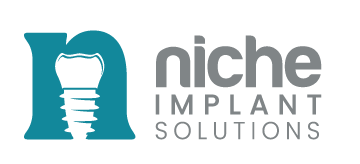
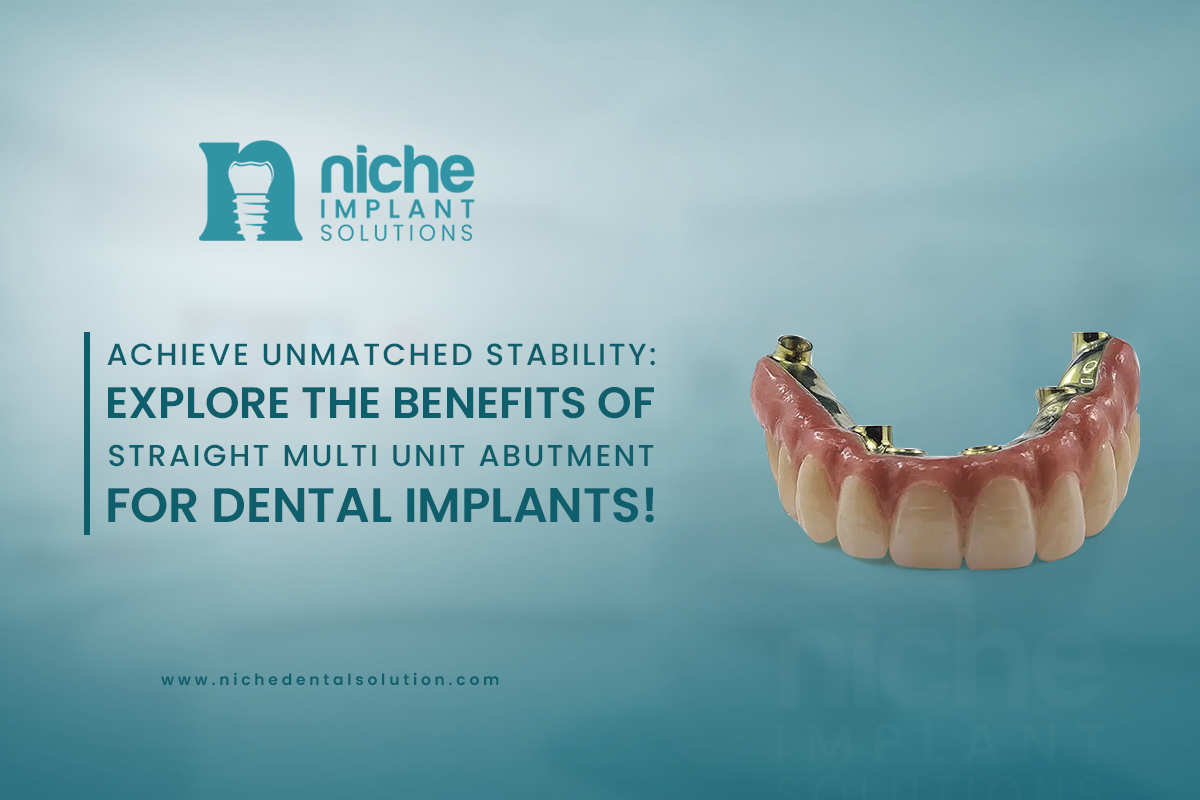
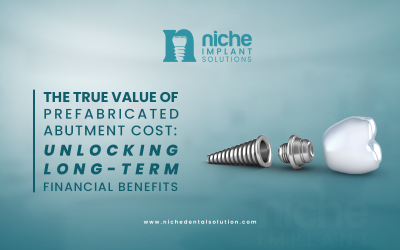
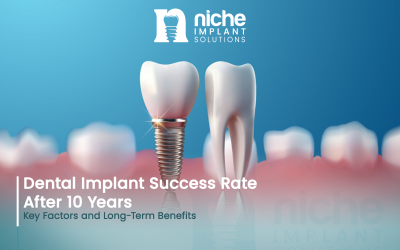
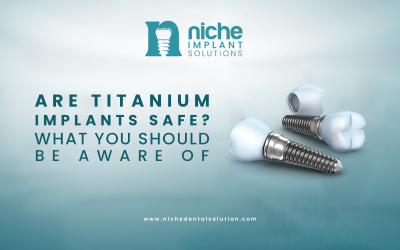
0 Comments